Affiliate links on Android Authority may earn us a commission. Learn more.
Samsung Galaxy Note 8 versus the competition
Published onAugust 23, 2017
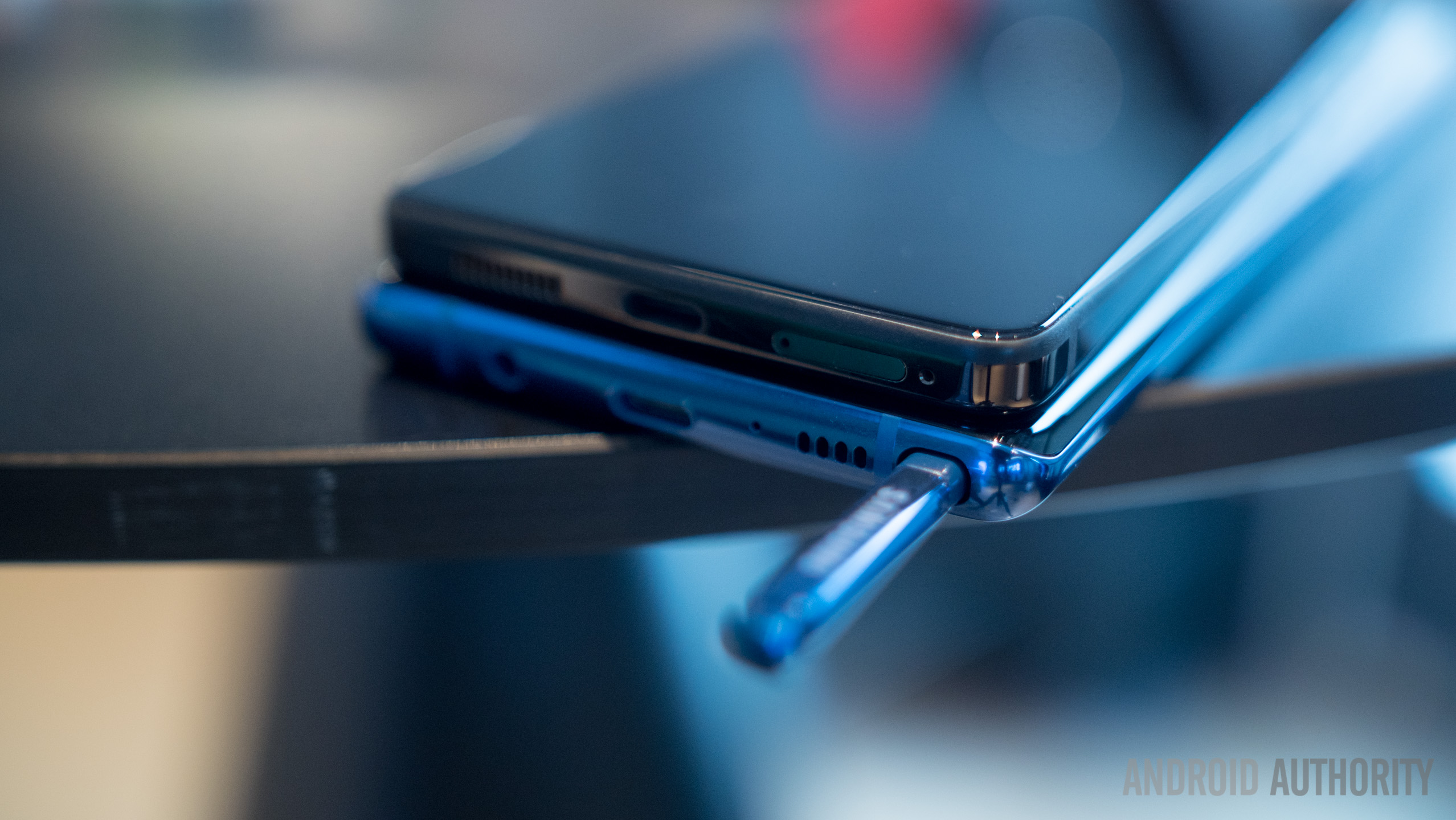
After being missing in action for a year, the Galaxy Note series is back with Samsung’s latest announcement of the Galaxy Note 8. From our initial time with the phone, it looks like the series has made the type of return that many had hoped for and expected: a truly high-end affair with all of Samsung’s latest bells and whistles.
Fans of the phablet will likely be especially pleased, as large flagship releases have been few and far between in the time since the Note 7. Xiaomi’s Mi Max 2 targeted the mid range rather than the top tier, and the LG V30 and HUAWEI Mate 10 are still hidden behind (largely) closed doors. Even so, let’s stack up the Galaxy Note 8 against its biggest and baddest competitors.
At a glance, the QHD+ HDR AMOLED display, Snapdragon 835, and dual camera configuration is a typical flagship package that places the Note 8 right at the top of the market.
Beginning with the display, the Galaxy Note 8 is one of the biggest and best out there. Its 6.3-inch AMOLED panel is only a smidge larger than the 6.2-inch Galaxy S8 Plus, but is notably larger than the 5.5-inch panels that make up most of the alternatives (different aspect ratio notwithstanding).
The HUAWEI Mate 9 Pro and LG V30 are the closest other Android phones from different brands in terms of sheer size and display resolution. QHD and Samsung’s slightly wider QHD+ variant remain the go-to resolutions in this form factor, where the larger panels can make the most use of the extra pixels, so there’s not a lot to separate the pack here other than size. Although if you’re looking at the cheaper HUAWEI Mate 9 model you’ll have to settle for a 1080p resolution.
Samsung is also boasting that its latest AMOLED displays meet the Mobile HDR Premium certification from the UHD Alliance, just like the S8 series does. Your only other alternative for an HDR smartphone right now is the LG G6 (and the Xperia XZ Premium’s 4K display). However, this is only really worth considering if you’re actually going to view HDR movies and the like while on the go. A niche market right now for sure but one that will grow over the lifespan of this device.
| Galaxy Note 8 | Galaxy S8 Plus | Google Pixel XL | HUAWEI Mate 9 Pro | LG V20 | iPhone 7 Plus | |
|---|---|---|---|---|---|---|
Display | Galaxy Note 8 6.3-inch QHD+ AMOLED (2960x1440) 18.5:9 aspect ratio | Galaxy S8 Plus 6.2-inch QHD+ AMOLED (2960x1440) 18.5:9 aspect ratio | Google Pixel XL 5.5-inch QHD AMOLED (2560x1440) 16:9 aspect ratio | HUAWEI Mate 9 Pro 5.9-inch FullHD (2560x1440) 16:9 aspect ratio | LG V20 5.7-inch QHD LCD (2560x1440) 16:9 aspect ratio | iPhone 7 Plus 5.5-inch LCD (1920x1080) 16:9 aspect ratio |
SoC | Galaxy Note 8 Snapdragon 835 or Exynos 8895 | Galaxy S8 Plus Snapdragon 835 or Exynos 8895 | Google Pixel XL Snapdragon 821 | HUAWEI Mate 9 Pro Kirin 960 | LG V20 Snapdragon 820 | iPhone 7 Plus Apple A10 Fusion |
CPU | Galaxy Note 8 4x 2.35 GHz Kryo 280 + 4x 1.9 GHz Kryo 280 or 4x 2.3 GHz Samsung M2 + 4x 1.7 GHz Cortex-A53 | Galaxy S8 Plus 4x 2.4 GHz Kryo 280 + 4x 1.7 GHz Kryo 280 or 4x 2.4 GHz Samsung M2 + 4x 1.7 GHz Cortex-A53 | Google Pixel XL 4x 2.15GHz Kryo | HUAWEI Mate 9 Pro 4x 2.4GHz Cortex-A73 + 4x 1.8GHz Cortex-A53 | LG V20 4x 2.15GHz Kryo | iPhone 7 Plus 4x 2.34 GHz |
GPU | Galaxy Note 8 Adreno 540 or Mali-G71 MP20 | Galaxy S8 Plus Adreno 540 or Mali-G71 MP20 | Google Pixel XL Adreno 530 | HUAWEI Mate 9 Pro Mali-G71 MP8 | LG V20 Adreno 530 | iPhone 7 Plus PowerVR Series7XT Plus |
RAM | Galaxy Note 8 6 GB | Galaxy S8 Plus 4 GB | Google Pixel XL 4 GB | HUAWEI Mate 9 Pro 4GB / 6GB | LG V20 4GB | iPhone 7 Plus 3 GB |
Storage | Galaxy Note 8 64 / 128 / 256 GB | Galaxy S8 Plus 64 GB | Google Pixel XL 32 / 128 GB | HUAWEI Mate 9 Pro 64 / 128 GB | LG V20 32 / 64GB | iPhone 7 Plus 32 / 128 / 256 GB |
MicroSD | Galaxy Note 8 Yes | Galaxy S8 Plus Yes | Google Pixel XL Yes | HUAWEI Mate 9 Pro No | LG V20 Yes | iPhone 7 Plus No |
The processing hardware begins to see the Galaxy Note 8 pull away from most of the pack, as we’re still waiting on phablet refreshes from LG, HUAWEI, and Google’s next Pixel. The Note 8 is simply out of the blocks first. To match the graphical grunt and 10nm efficiency of the Note 8 chipset, your option is limited to the S8 Plus, or picking a smaller flagship like the HTCU11 or LG G6. HUAWEI’s Kirin 960 is a good chip, but its GPU capabilities are notably reduced, and all of last year’s other models are sporting Snapdragon 820 chips. The 820 is no slouch, but it isn’t cutting edge any more.
The extra RAM and memory onboard certainly makes the Note 8 appealing to the range's traditional power user base.
Of course, the performance landscape will change over the next month or so as Samsung’s rivals release their own products. However, no upcoming phone is likely going to notably overtake the Note 8 or Galaxy S8 for performance until 2018.
On the memory side, the Note 8 finally sees some meaningful differentiation from the Galaxy S8 Plus. The Note 8 packs in a whopping 6 GB of RAM, more than you’ll need, and a selection of storage options up to 256 GB, plus a microSD card slot. You’ll be hard pressed to find other phones offering that much storage space, with the Mate 9 Pro model and the iPhone 7 Plus being the closest alternatives in a phablet form factor.
| Galaxy Note 8 | Galaxy S8 Plus | Google Pixel XL | HUAWEI Mate 9 Pro | LG V20 | iPhone 7 Plus | |
|---|---|---|---|---|---|---|
Cameras | Galaxy Note 8 12MP f/1.7 wide + 12MP f/2.4 tele rear with OIS & 2x zoom 8 MP f/1.7 front | Galaxy S8 Plus 12 MP f/1.7 rear 8 MP f/1.7 front | Google Pixel XL 12.3 MP f/2.0 rear with OIS 8 MP front | HUAWEI Mate 9 Pro 12 MP RGB + 20 MP monochrome f/2.0 rear with laser AF & 2x zoom 8MP front | LG V20 16MP f/1.8 + 8MP f/2.4 rear with OIS, laser & PDAF 5MP f/1.9 front | iPhone 7 Plus 12 MP + 12 MP f/1.8 rear with OIS & 2x zoom 7MP f/2.2 front |
Battery | Galaxy Note 8 3,300 mAh | Galaxy S8 Plus 3,500 mAh | Google Pixel XL 3,450 mAh | HUAWEI Mate 9 Pro 4,000 mAh | LG V20 3,200 mAh | iPhone 7 Plus 2750 mAh (est) |
NFC | Galaxy Note 8 Yes | Galaxy S8 Plus Yes | Google Pixel XL Yes | HUAWEI Mate 9 Pro Yes | LG V20 Yes | iPhone 7 Plus Yes |
Fingerprint | Galaxy Note 8 Yes | Galaxy S8 Plus Yes | Google Pixel XL Yes | HUAWEI Mate 9 Pro Yes | LG V20 Yes | iPhone 7 Plus Yes |
Fast Charge | Galaxy Note 8 Yes | Galaxy S8 Plus Yes | Google Pixel XL Yes | HUAWEI Mate 9 Pro SuperCharge | LG V20 Quick Charge 3.0 | iPhone 7 Plus No |
IP Rating | Galaxy Note 8 IP68 | Galaxy S8 Plus IP68 | Google Pixel XL No | HUAWEI Mate 9 Pro No | LG V20 No | iPhone 7 Plus IP67 |
3.5mm audio | Galaxy Note 8 Yes | Galaxy S8 Plus Yes | Google Pixel XL Yes | HUAWEI Mate 9 Pro Yes | LG V20 Yes | iPhone 7 Plus No |
Extras | Galaxy Note 8 USB Type-C, Bixby, Facial Recognition Wireless Charging, Samsung Pay, HDR display, Bluetooth 5 | Galaxy S8 Plus USB Type-C, Bixby, Facial Recognition Wireless Charging, Samsung Pay, HDR display, Bluetooth 5 | Google Pixel XL USB Type-C, Daydream | HUAWEI Mate 9 Pro USB Type-C, Daydream | LG V20 USB Type-C, MIL-STD-810G certified, 32-bit/192kHz audio, removable battery | iPhone 7 Plus Lightning Port, 3DTouch |
OS | Galaxy Note 8 Android 7.1 | Galaxy S8 Plus Android 7.0 | Google Pixel XL Android 7.1 | HUAWEI Mate 9 Pro Android 7.0 | LG V20 Android 7.0 | iPhone 7 Plus iOS 10 |
Outside of the new look and display, the other most instantly notable change about the Galaxy Note 8 is the move over to a dual camera configuration. A first for Samsung, meaning that the company joins the likes of LG, HUAWEI, and Apple, among others.
While LG has opted for a wide angle shooting option, and an increasing number of OEMs are opting for a RGB + monochrome camera setup that HUAWEI has made us all quite familiar with, Samsung has plumped for a telephoto secondary lens, much like Apple and OnePlus. The combination of one wide angle and one telephoto lens allows for a 2x optical zoom, software bokeh, and post shutter adjustments, enabling users to get more creative with macro shots and retaining detail at longer distances.
Samsung has provided excellent cameras lately, but the new 2x zoom dual camera offers photographers more shooting options, allowing it to rival the creativity of the LG G6, OnePlus 5, and iPhone 7 Plus.
The familiar f/1.7 aperture for the wide angle lens suggests that we’re looking at a similar quality camera to the impressive Galaxy S8, if not exactly the same sensor simply with a new lens configuration. Now we’re going to need to spend more time with the camera to see if cramming in two sensors has negatively impacted quality at all. But the introduction of a dual camera now means that Samsung is competing with the very best with a range of shooting options.
The front camera configuration also looks quite familiar for Samsung, and its resolution matches up pretty much with what we’ve come to expect from high-end models. Although you can find more dedicated selfie snappers out there with higher resolution.
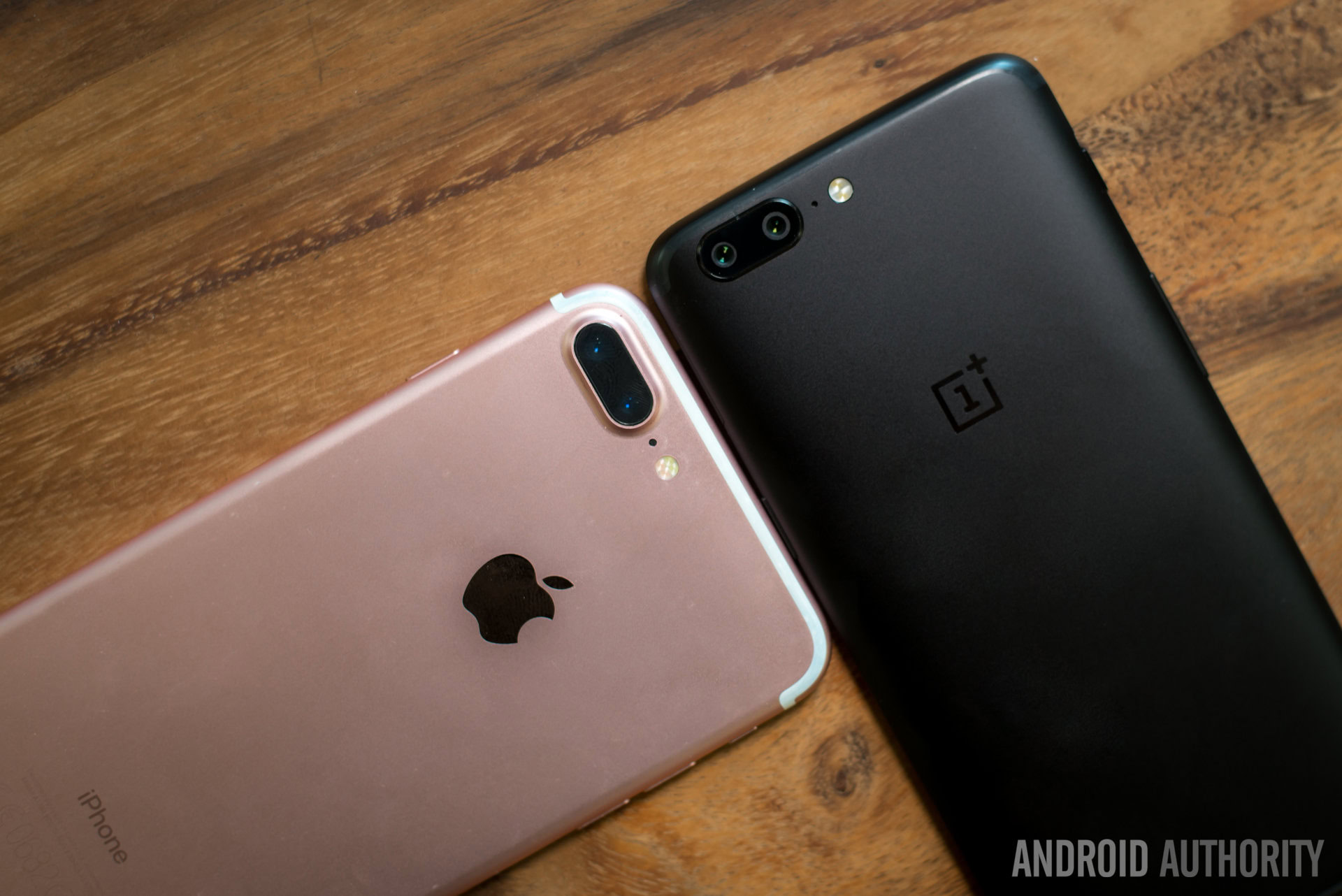
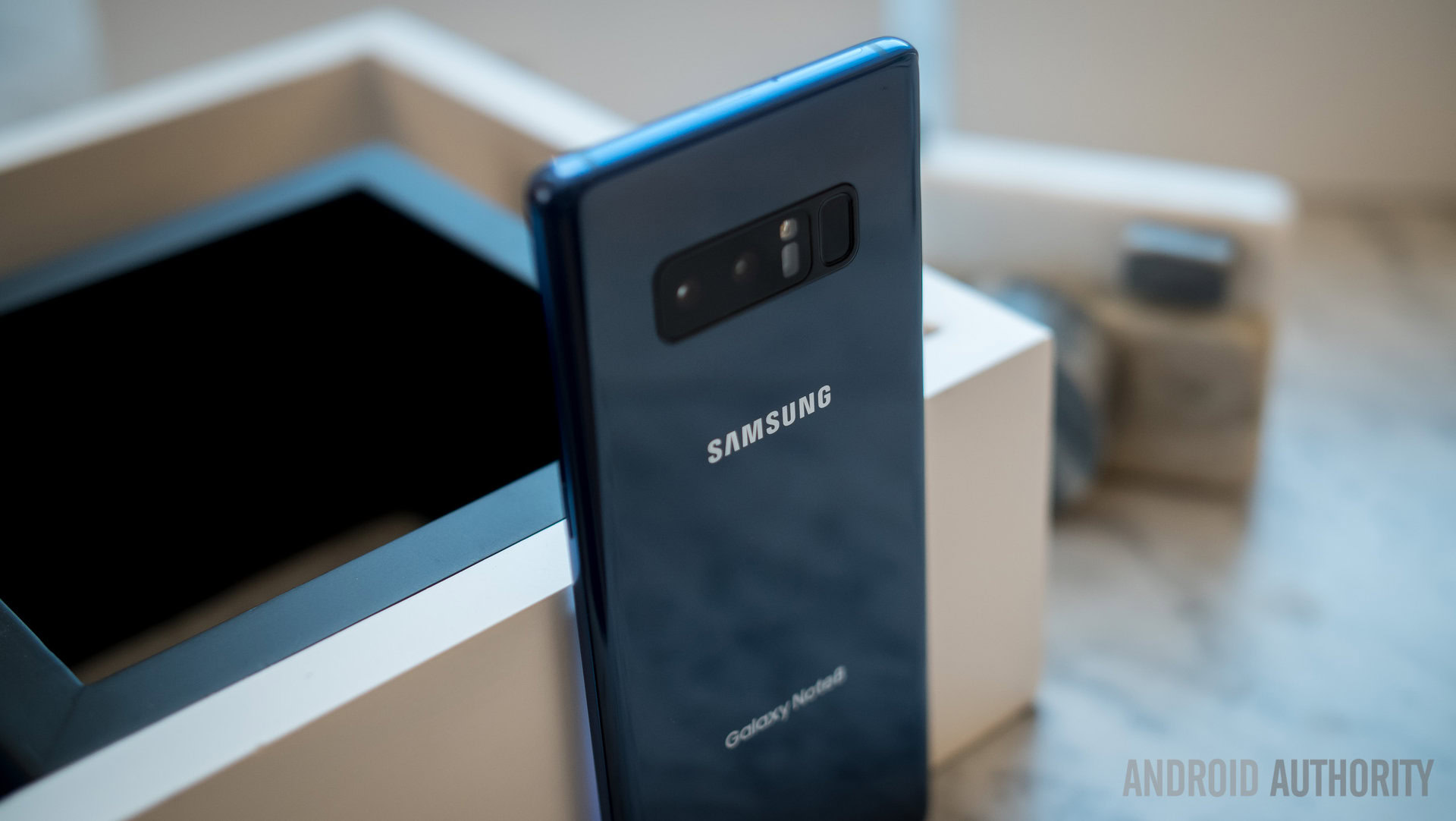
In terms of extras, there’s no removable battery – the LG V20 is one of the few remaining handsets allowing users to swap out the cell. Interestingly, the Galaxy Note 8 battery is smaller than what you receive in the Galaxy S8 Plus, coming in at 3,300 mAh vs 3,500 mAh. We all know why Samsung is probably playing it a little conservatively here, and 3,300 mAh sits right in the middle of what’s on offer from many other large phones. However, when the Pixel XL has a bigger battery and you’re well behind the Mate 9’s colossal 4,000 mAh capacity (and that paired with a Full HD display), you can’t help but feel a little short-changed in terms of potential screen-on time with the Note 8.
Extra features is where Samsung has typically shone against the competition, and the Galaxy Note 8 is no exception. USB Type-C, NFC and MST for Samsung Pay, wireless charging out of the box, Bluetooth 5, and facial recognition are all there, along with the beloved S-Pen. Although most of these features will feel very familiar to Galaxy S8 owners, and a lot of them are available on other models too. The IP68 rating is something that a few phablets offer now, so it’s no surprise that the Note 8 has water and dust resistance.
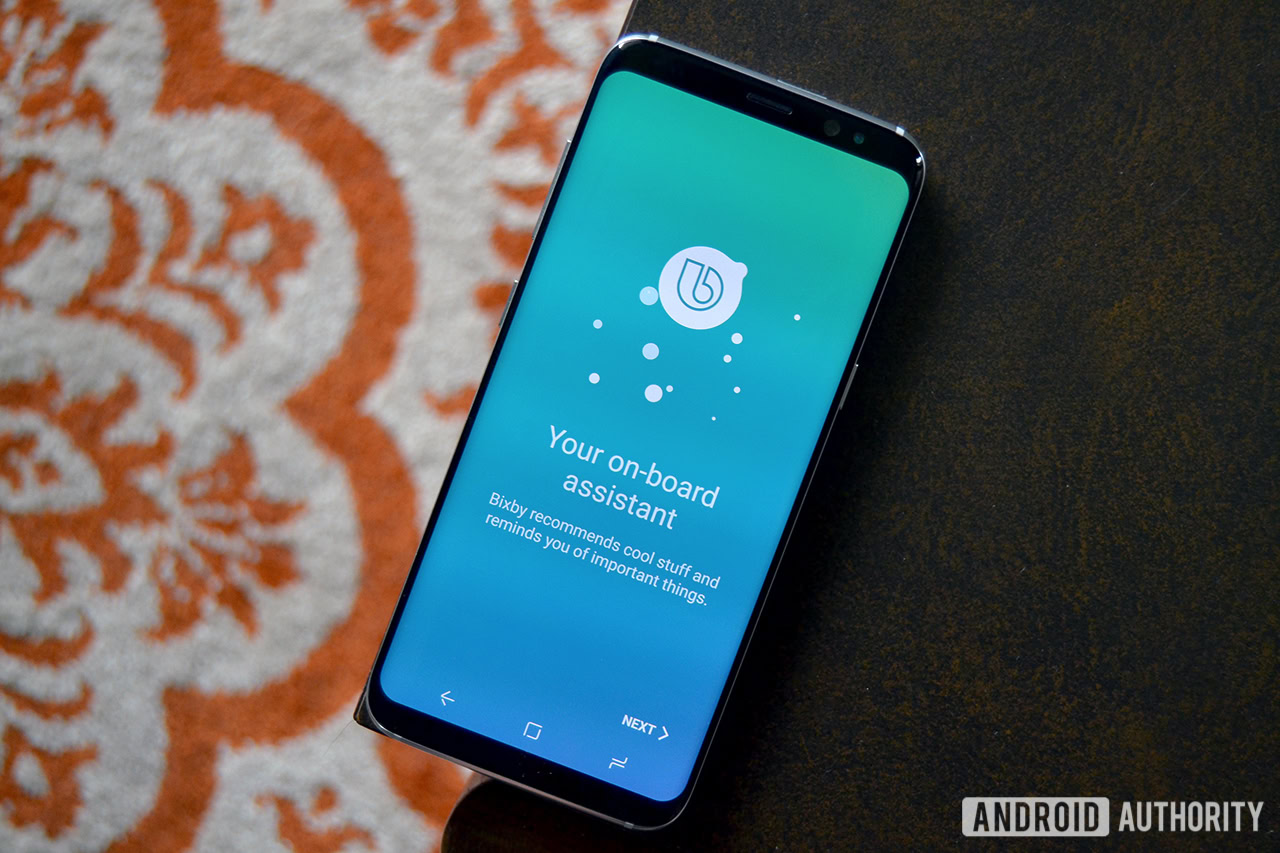
Bixby will arrive out of the box with the Note 8, and Samsung is also now rolling out its voice service worldwide to Galaxy S8 owners too. Although virtual assistants are touted as the next big thing, most of today’s phones already have access to Google Assistant, which many prefer anyway. Support for Samsung Dex also makes a return with the Note 8, and there’s support for a range of Samsung’s smart home products too. If you’re big into Samsung’s ecosystem then this might win you over compared to other handsets, but these probably won’t be a deal maker or breaker to many.
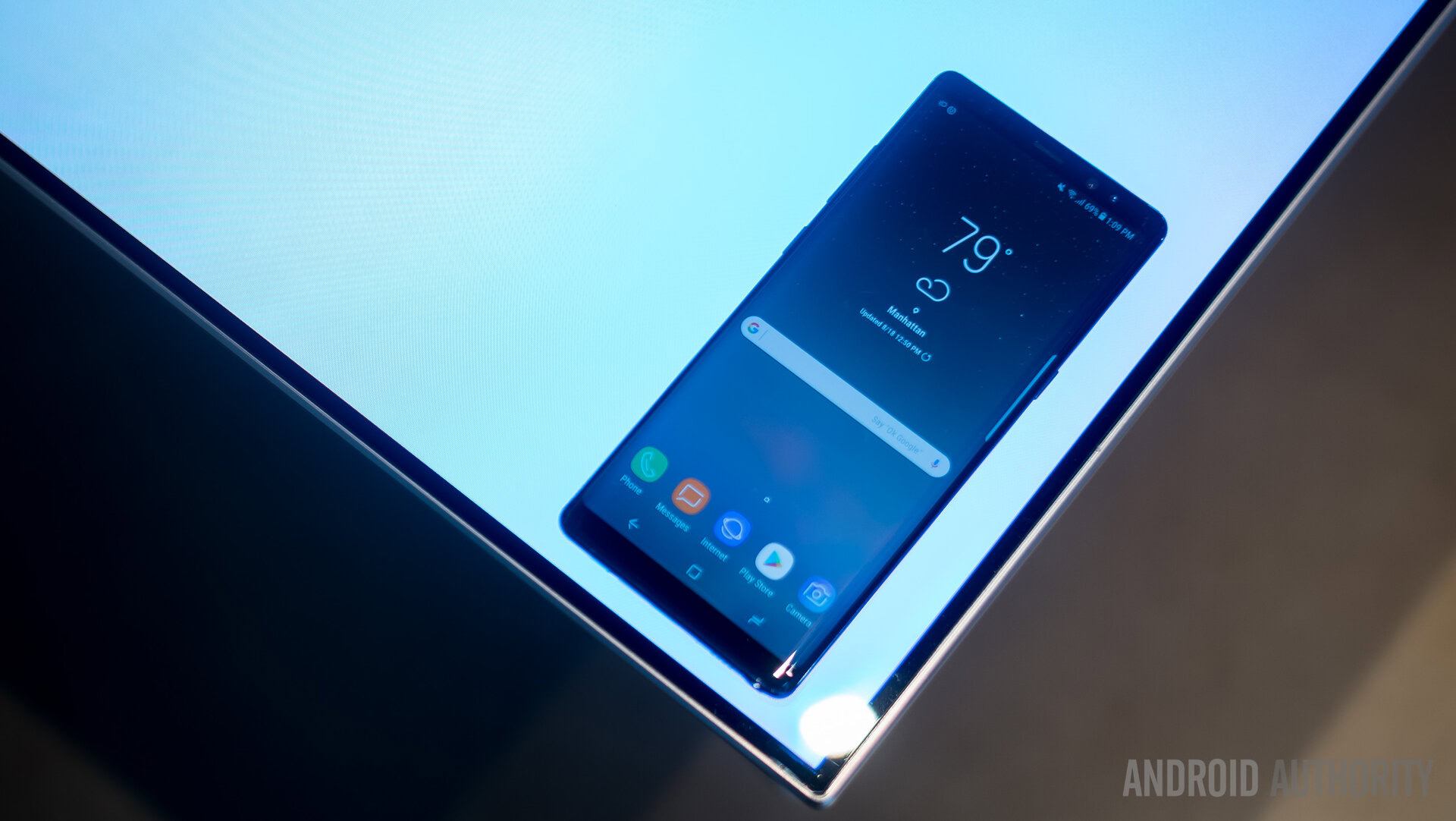
Wrap Up
With the absence of the Galaxy Note 7, a number of flagship phablet models stepped in to attempt to fill the void last year. And although there are some very good alternatives out there, the Galaxy Note 8 has returned as one of the most feature rich super-sized smartphones ever to hit the market.
Samsung’s Note series has always been used to debuting cutting edge technology and this year’s release is no different. The move over to dual cameras is the biggest change here, and the extra RAM and memory on board certainly makes the phone appealing to its traditional power user base. So in that sense this release feels very much like a classic Galaxy Note launch.
However, S-Pen notwithstanding, Samsung already has a very similar device in the Galaxy S8 Plus, in terms of both hardware and software features. Those who quickly picked one up looking for a Note 7 replacement may not feel the need to upgrade quickly to the Note 8, and the inevitable price drop on the S8 Plus will present a great opportunity to pick up a powerful big phone without the Note 8’s big price tag.
All of that being said, the Note 8’s only real competitors right now are notably older. We are awaiting the launch of three of the Note 8’s major competitors before the year is out, and so phablet fans may want to wait and see what the likes of the LG V30, HUAWEI Mate 10, and Pixel XL 2, have to offer before making up their minds.